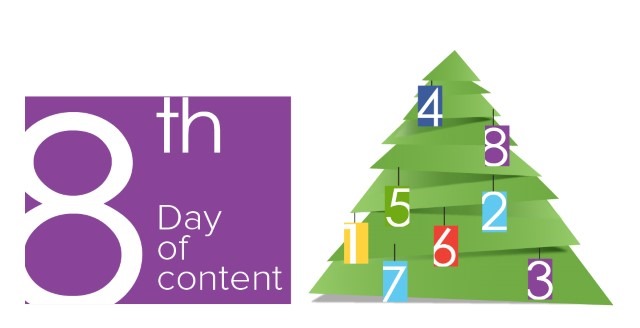On the 8th Day of Content, we give you 8 tips for optimizing images on your website, blog, and social media. More exciting than eight maids a-milking? Definitely.
According to MDG Advertising, articles with images get 94% more views. If that statistic isnt enough to convince you to optimize your images, consider how images affect your engagement value on social media: Facebook, Google+, Pinterest, Instagram, Tumblr and even Twitter are all evolving into primarily visual platforms. Images are crucial to any content marketing strategy and, when optimized properly, can help to improve your rank on Google. Next time you upload an image for your blog, website or social media, try some of these tips:
1. Make sure the content on the page relates to the image.
This might go without saying, but its important to ensure that your image directly reflects the content of the page on which its published. If potential readers land on a blog post about kitchen appliances and see an image of the abominable snowman, they might get confused and bounce (get it? Bumbles *bounce*!).
2. Include a proper title & ALT text.
When uploading an image to your blog or website, be sure to name the file and apply the ALT text in plain English. This helps search engines to identify what the image is about and can help to improve your search rank. Be clear and descriptive, but don't stuff it with keywords.
3. Consider including captions.
Although image captions don't directly impact search rank, captions are a helpful feature for point #1 " ensuring the content on the page relates to the image. As images are more attractive to the eye than text, your website or blog viewers will be first drawn to your images and their accompanying captions. If viewers can instantly make a connection between image and text, its likely that your bounce rate will decrease.
4. Use proper image size and quality.
There is such a thing as an image being too large (or too small) for the Internet. In most cases, smaller images are better (without sacrificing quality, of course). To ensure quicker loading times, be sure to upload images of the appropriate size for your blog or website - don't make the browser take time to resize it. If your image is too large, there are plenty of tools available online to downsize (like Image Optimizer).
5. Choose the right format.
JPEG, PNG, GIF, oh my! JPEG images are easily compressible and are therefore best for small, high quality images. PNG images are a great alternative, though the file quality can sometimes degrade with a decrease in size and they don't support as many colours as JPEGs. GIFs suffer the same drawbacks as PNGs and are best used for animations. So, although all files can work, JPEGs are usually your best bet.
6. Use best practices for social media.
Social media platforms are quickly becoming more and more visual - posts with images are more engaging and more likely have a higher click-through rate and a greater number of shares than text posts. A bit of extra effort is required to optimize each images size and format for publication on each social media platform, but its definitely worth it - check out this social media image size cheat sheet as a guideline for how to size your images for social promotion.
7. Create your own graphics.
Original and creative content is always more engaging, and images are no exception. Its worth the investment to create your own graphics to explain your business's products and services, or to demonstrate expertise within the industry. Don't forget to incorporate your brands logo on your original images or graphics!
8. Stay legal.
Just because images on the internet are liberally available, it doesn't mean that all images are free. To be safe, always assume that images are protected and treat them accordingly. There are plenty of guidelines available to help you legally access images and copyright laws. Don't forget to read the fine print!
As they saying goes, a picture is worth 1000 words. Images are an important part of any inbound marketing strategy because they help capture your audiences attention, distinguish your brand, and make your content memorable. Including an image, regardless of whether it is a photo or a graphic, is one of the easiest ways to make your content more visible.
Don't miss out on the rest of our content optimization tips as our 12 Days of Content blog series continues!



